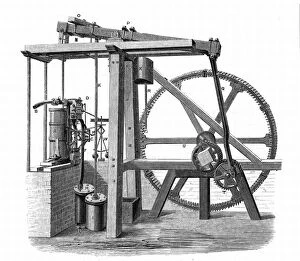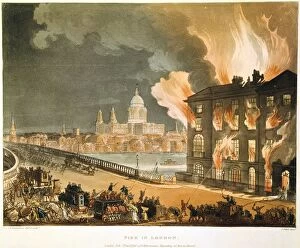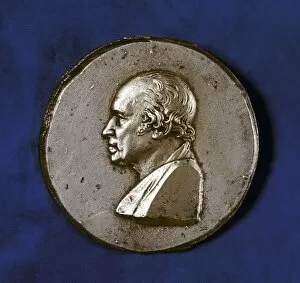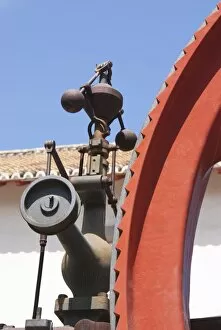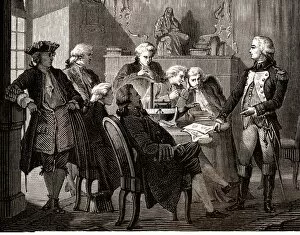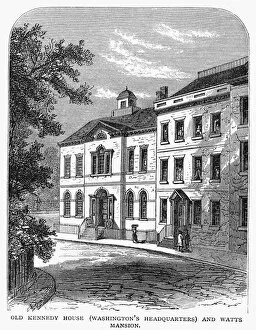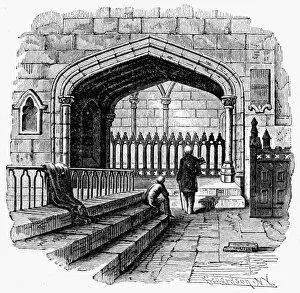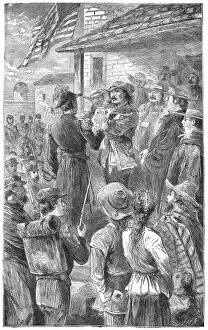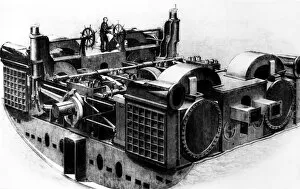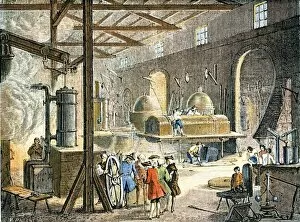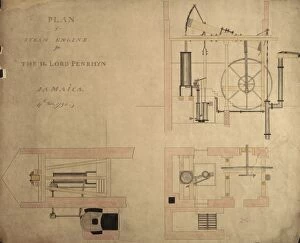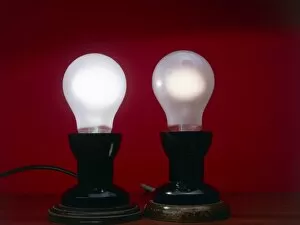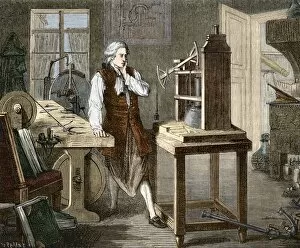Watt Collection (#6)
"Watt: The Powerhouse Inventor and His Impact on History" James Watt, a Scottish engineer and inventor, revolutionized the world with his groundbreaking contributions
For sale as Licensed Images
Choose your image, Select your licence and Download the media
"Watt: The Powerhouse Inventor and His Impact on History" James Watt, a Scottish engineer and inventor, revolutionized the world with his groundbreaking contributions. Known for his work on the steam engine and governor, he played a pivotal role in the Industrial Revolution. One of Watt's notable achievements was his collaboration with Matthew Boulton to create the Boulton and Watt steam engine. This remarkable invention incorporated a planetary gear system that enhanced its efficiency and power output. A general view of this impressive machine showcases its grandeur and technological advancements. Watt's brilliance extended beyond engineering as he became an influential member of the Lunar Society, a group of intellectuals who met regularly to discuss scientific discoveries and promote progress. Their intellectual vigils paved the way for numerous innovations that shaped society. In John Pettie's painting "The Vigil, " we catch a glimpse into one such gathering where minds like Watt gathered to exchange ideas, fueling their passion for knowledge. These gatherings were instrumental in fostering creativity and driving societal change. While known for his engineering prowess, James it also had diverse interests outside of his workshop. He enjoyed golfing at Harewood Downs, indulging in leisurely games alongside fellow enthusiasts wielding their golf clubs. This recreational pursuit provided him with moments of respite from his tireless inventions. Watt's impact stretched far beyond England; even Chatsworth House in Derbyshire bears witness to it. In 1786, W. Watts captured this magnificent seat belonging to the Duke of Devonshire through an intricate line engraving—a testament to both architectural beauty and industrial progress intertwined under Watt's influence. His dedication knew no bounds as he tirelessly improved upon Thomas Newcomen's earlier design from 1712 while working in his Glasgow workshop—an endeavor that would forever transform steam technology. Beyond inventions lies human connection—such as Samuel Watts' involvement with Tuskegee Airmen during World War II—a group of African-American pilots who defied racial barriers and fought with valor.

